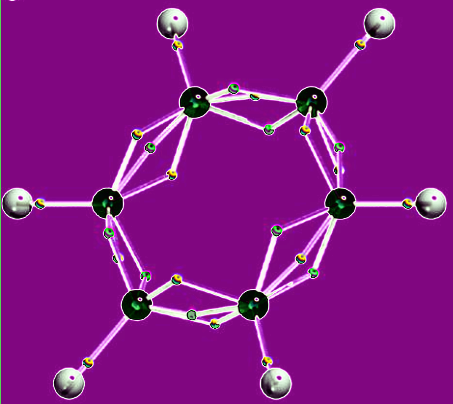Benzene spin unwound
 A high-tech study has solved a chemical mystery about the nature of benzene.
A high-tech study has solved a chemical mystery about the nature of benzene.
Debate has raged for nearly a century about the electrons in benzene.
Benzene is a flat, hexagonal ring of six carbon atoms matched with six hydrogen atoms.
The chemical is the fundamental building block of many opto-electronic materials, which are revolutionising renewable energy and telecommunications tech.
The mystery surrounding the structure of benzene comes from the fact that it has just a few atomic components, but the electrons exist in a state comprising 126 dimensions, not just four.
The molecule’s electrons must be understood by a mathematical function of 126 coordinates - three for each of the 42 electrons.
Because the electrons are not independent, the maths cannot be broken down into 42 independent three-dimensional functions.
Understanding the structure of benzene needs to take 126 dimensions into account, which requires advanced maths and massive computing power.
It has not been possible to analyse such a complex system until recently. Without understanding the precise behaviour of benzene electrons, the stability of the molecule in tech applications could never be completely understood.
But now, a collaboration between Exciton Science, UNSW and CSIRO has unravelled some of that mystery – with surprising results.
The research team applied a complex algorithm to perform dynamic Voronoi Metropolis sampling (DVMS) on benzene molecules, mapping their wavefunctions across all 126 dimensions.
Of particular interest to the scientists was understanding the “spin” of the electrons.
All electrons have spin – it is the property that produces magnetism, among other fundamental forces – but how they interact with each other is at the base of a wide range of technologies, from light-emitting diodes to quantum computing.
“What we found was very surprising,” said Professor Timothy Schmidt.
“The electrons with what’s known as up-spin double-bonded, where those with down-spin single-bonded.
“That isn’t how chemists think about benzene.
“Essentially it reduces the energy of the molecule, making it more stable, by getting electrons, which repel each other, out of each other's way.”
Co-author Phil Kilby from Data61 added: “Although developed for this chemistry context, the algorithm we developed, for ‘matching with constraints’ can also be applied to a wide variety of areas, from staff rostering to kidney exchange programs.”
The results have been published in the journal Nature Communications.








 Print
Print